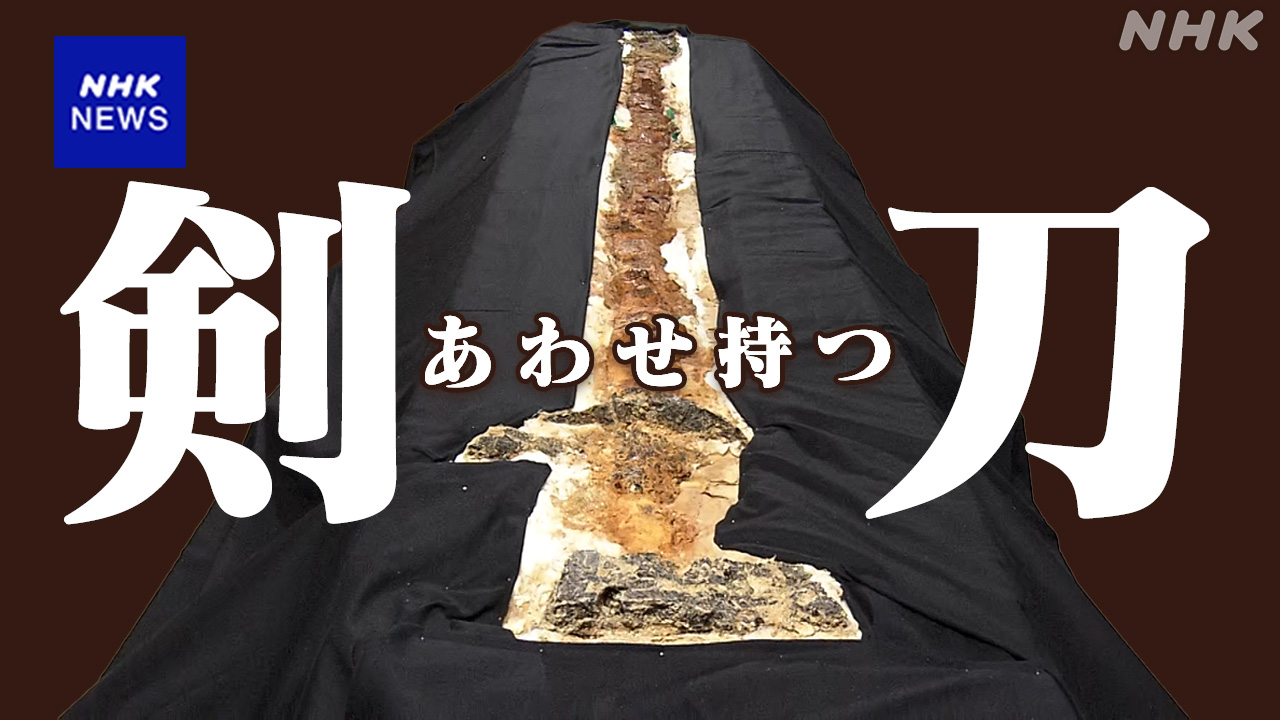A serpentine sword, said to be the longest iron sword in ancient East Asia, was found in a tomb in Nara City. It turned out that it had a special shape. Experts say it will be an extremely important document for understanding the evolution of swords during the Kofun period.
The Tomio Maruyama Tumulus in Nara City, which is said to have been built in the latter half of the 4th century during the Kofun period, has a meandering tomb measuring over 2 meters and 30 centimeters long, said to be the longest in ancient East Asia. A wavy-shaped iron sword called ``ken'' was found, and work has been carried out to remove rust and mud from the surface at the Nara Prefectural Kashihara Archaeological Research Institute.
As a result, the wooden handle has a curved tip called the ``Tsukagashira'', which resembles the letter ``L'', and a ▼Tsukabuchi (grip). It has been newly discovered that there is a protrusion on one side of the part near the blade called "."
The L-shaped pommel is a characteristic found in swords from later periods, and the protrusion on the grip edge is a feature found in swords from later periods, and this is the first time a tsuka has been found that has both of these characteristics.
Additionally, the wooden ``saya'' that housed the sword had a long, thin rod-like object about 18 centimeters long and 2 centimeters in diameter attached to the tip.
It is believed that this is an ``ishizuki'' that prevents the tip of the sheath from directly touching the ground when the sword is placed upright, and this is the first time that this has been confirmed on a sword from the Kofun period.
Kosaku Okabayashi, curatorial advisor at the Nara Prefectural Kashihara Archaeological Research Institute, who is knowledgeable about the Kofun period, says, ``This will be an extremely important document for understanding the changes in swords during the Kofun period.''
This serpentine sword will be on display to the public from March 30th to April 7th at the Museum attached to the Nara Prefectural Kashihara Archaeological Research Institute in Kashihara City.
Expert: “The uniqueness of this sword will be further emphasized.”
According to Professor Naohiro Toyoshima of Nara University, who is an expert on ancient swords, the tip of the ``serpentine sword'' is curved like the letter ``L'', just like the ``tsuka'' in ``serpentine swords.'' This is said to be a characteristic of the 5th century sword, which was created later than the Tomio Maruyama Tumulus, which is said to have been built in the latter half of the 4th century.
Another characteristic of swords from the 5th century is that they have a protrusion on one side of the part near the blade called the ``huen''.
Professor Toyoshima said, ``Swords and swords may have been created through trial and error before their respective shapes were standardized,'' and added, ``The extremely large serpentine sword is a special sword used in rituals and rituals.'' However, the ``tsuka'' and ``saya'' that were attached to it were also of a special shape, further emphasizing the uniqueness of this sword.''

